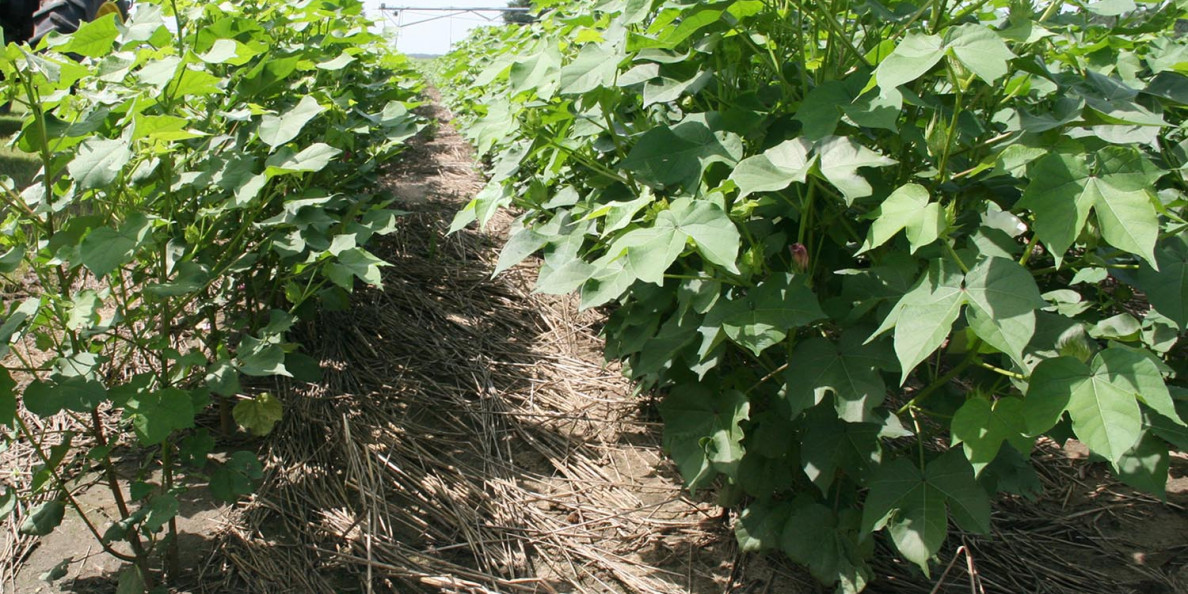“We’re also seeing a lot of dryland growers do it, too,” he says. “Every year we get away from the drought, the better off we are. The worst drought year was 2011, and 2014 was the last of the dry springs. So, dryland growers are doing practices like planting cover crops, which they couldn’t do earlier because they wanted to preserve soil moisture.”
Southwest growers terminate the cover crop in the spring, Boman says, at about the hollow stem stage, and then plant no-till cotton later, or in some cases strip-till. “They often terminate the small grains cover crop in April, using Roundup. Depending on the weed situation, they might add 2,4-D or dicamba to help control glyphosate-resistant horseweed. Once they burn down the wheat or rye, they go back in and apply something like paraquat or Liberty, and Valor or Prowl H2O, to keep weeds down before planting.
“In our area, we have to be vigilant with respect to soil moisture. We don’t want the cover crop removing precious soil moisture — especially close to planting time. We are always looking over our shoulder for the next drought, and we have to get a cotton stand.”
PREVENT EROSION, SANDBLASTING
In the eastern areas of the Coastal Plains, where some areas are completely no-tilled, many cotton growers primarily use wheat as a cover crop, says Dr. Keith Edmisten, North Carolina State University cotton specialist. In fact, almost half the state’s cotton acres have a wheat cover crop planted on them.
“Few growers use legumes for a cover crop,” he says. “In the Piedmont, several growers use a multi-species blend, but the majority of mixtures is wheat. Most Coastal Plain growers strip-till and use wheat cover crops. That’s particularly true in the highly erodible areas in the western part of the Coastal Plain. But, you also see wheat cover in other areas of the state that aren’t highly erodible, primarily to prevent sandblasting. Our growers have two major reasons for using a wheat cover crop: to prevent soil erosion, and to prevent sandblasting.”
North Carolina cotton growers normally terminate the wheat cover two weeks to three weeks prior to planting cotton, Edmisten says. Depending on weeds present in the field, they use primarily Roundup and some paraquat. If they have primrose, they will go in a little earlier with 2,4-D.
TRAINING WHEELS
The perfect blend of cover crops will be different for different growers. “So, before you plant a cover crop, you first have to sit down and decide exactly what you want out of the it,” says Dr. Bill Robertson, University of Arkansas cotton specialist.
“Weed suppression is probably No.1 on a grower’s list. Several studies conducted by Dr. Tom Barber, University of Arkansas weed specialist, and me show that cereal rye is very good for weed suppression.”
Robertson calls cereal rye “the cover crop with training wheels,” and says, “we urge growers just starting with cover crops to plant cereal rye because it’s so easy to manage. Later, they can expand into blends of multiple species, including cereal rye and black oats. Cereal rye is a very deep-rooted crop, with an extensive root system. Black oats have a different root system, but give you diversity.
“I want a cover crop to produce roots as many months during the off season as I can get, because roots are what feed the soil microbes. They keep microbes in the growing mode, instead of just a survival mode, to help improve soil structure. Some growers who consistently use a cereal rye cover crop no longer have to do deep tillage. Our university studies show that deep-rooted cover crops can cut back tillage to almost nothing.”
Robertson cautions growers about the “green bridge” — planting cotton into green cover crops can exacerbate overwintering insect pressure. But, terminating cereal rye too early can cause planting problems. “We’ve found that when we terminate cereal rye 4 weeks to 5 weeks before planting, the rye stems harden and tangle like little ropes. Rolling makes it worse.
MANAGE BROADLEAF WEEDS
“Many growers terminate cereal rye right in front of, or behind, the planter. When cereal rye is green, the planter’s double-disc opener cuts through it like a hot knife through butter. And you can run a roller in front of tall cereal rye. Everything lays the same way, making it easy to plant into. This doesn’t eliminate the green bridge issue; to eliminate that, the cover crop must be dead at planting.”
However, the key to easing planting in cereal rye while minimizing the green bridge issue is to manage broadleaf weeds. “Most early season insect pests overwinter on broadleaves,” Robertson says. “So, in February I take out broadleaves in my cover crop with 2,4-D or dicamba. When I later plant cotton, I only have a grass cover crop, and I’m more comfortable terminating the cover crop in front of or behind the planter.”
Another benefit of cover crops is related to irrigation: improved water infiltration. In several studies, Robertson installed soil moisture sensors in the field 6 inches, 12 inches, and 18 inches deep.
“I work with several growers who split a field in half, using their regular practices on one half, and cereal rye cover crop on the other half,” he says. “Where they use no cover crop and reduced tillage on one half, and I use almost no-till and a cover crop on the other half, my watering infiltration is so much better. When I get a rain or irrigation on non-cover crop ground, sometimes my 6-inch deep sensor never knows it. But, where I have a cover crop, a rainfall or irrigation will impact all the way down to the 18-inch sensor.
“When water goes that deep, roots also grow that deep, enhancing water and nutrient uptake, Robertson says. “I think we can grow cotton more cheaply with cover crops because our irrigation efficiency is improved.”
